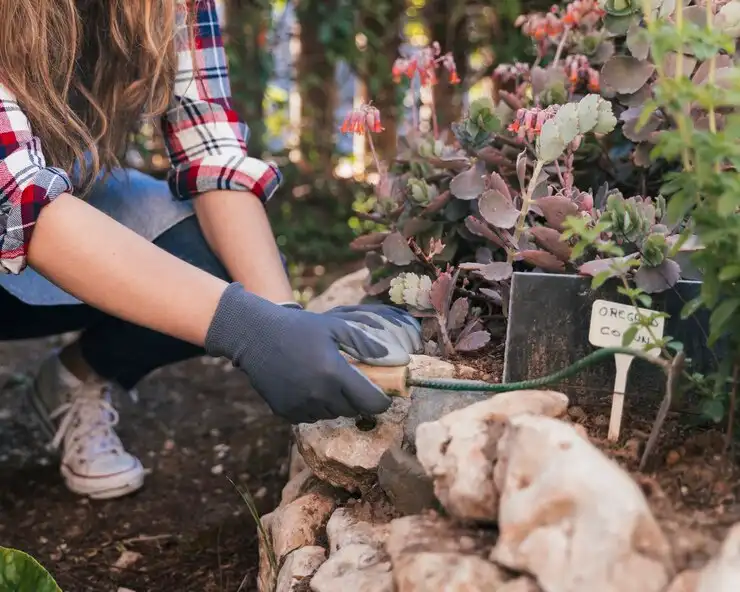
Blog
Water Wise Horticulture Strategies for Drought Resistant Design

More households are using water wise gardening techniques to produce resilient, gorgeous landscapes that require less watering as worries about environmental sustainability and water conservation rise. Water wise gardening, often referred to as xeriscaping or drought resistant gardening, is centered on choosing plants, materials, and design components that may flourish in arid environments while using less water. Here are some pointers for putting water wise gardening techniques into reality and designing a colorful and long lasting landscape, regardless of whether you live in an arid region or just want to save water in your garden..
Selected Drought Resilient Plants.
Local Plants
Choose native plants that are suited to the soil and temperature of your area naturally. Native plants are perfect for water wise gardens since they have evolved to require little care and water.
Species Resistant to Drought
Select plants that can withstand droughts and require little to no irrigation to survive. Succulents, decorative grasses, and Mediterranean herbs like lavender and rosemary are examples of low water plants to look for.
Plants Sorted by Water Needs.
Hydrozoning
To construct hydrozones, group plants in the landscape that require similar amounts of water together. You may more effectively control irrigation and cut down on water wastage by combining plants that require a lot of water in one area and plants that require little water in another.
Effective Watering Systems
Put in effective irrigation systems, such as soaker hoses or drip irrigation, to supply water straight to the plants roots. Steer clear of above sprinklers since they might evaporatively and runoffally waste water.
Boost the Health of the Soil.
Mulch
To assist retain moisture, inhibit weed growth, and control soil temperature, cover the top layer of the soil with an organic mulch such as wood chips, bark, or compost. As mulch decomposes, it also enriches the soil with organic matter, enhancing its fertility and structure.
Modifications to the Soil
Add organic additions to the soil, such as compost, aged manure, or coconut coir, to improve soil health and water retention. These supplements improve the ability of the soil to hold moisture and provide plant roots with a more nourishing environment
Use Insightful Planting Methods.
Planting Methods
To make planting beds with better drainage and water retention, use planting techniques like double digging or soil mounding. Fill planting holes with compost or other organic material to provide plants a rich, nutrient filled growth medium.
Density of Planting
To produce a live mulch that shadows the surface of the soil and lowers water evaporation, plant intensively. To cover bare soil and reduce moisture loss, use spreading shrubs, low growing perennials, and ground coverings.
Gather and Store Rainwater.
Barrels of rain
To collect and store rainwater from your roof for use in your garden, use rain barrels or cisterns. Reduce the need for additional irrigation from municipal sources by using the rainwater gathered to irrigate plants during dry spells.
Rain Gardens
To collect and filter rainwater runoff from paved surfaces, such as driveways and sidewalks, create rain gardens or bioswales. In order to lessen erosion and to absorb excess water, plant natural plants in these places.
Reduce the Turf Areas.
Shrink the size of the lawn
Reduce the amount of your landscape grass sections to save water and maintenance costs. Hardscape elements like patios and walkways, native grasses, or tolerant of drought ground coverings can be used in place of conventional lawns.
Synthetic Lawn
In locations where natural grass has trouble thriving, think about switching from complicated turf grass to artificial turf. Artificial turf looks lush and green without requiring fertilizer, watering, or mowing.
Accept the Principles of Sustainable Design.
Minimal Impact Architecture
Design your garden with sustainable design elements such as ecological landscaping, regenerative agriculture, and permaculture. Put your attention on developing resilient ecosystems that sustain ecological balance and biodiversity.
Diminish Hardscape
Reduce the amount of hardscape materials you use, such as paving stones, asphalt, and concrete, as they can exacerbate the impacts of heat islands and water runoff. To let rainfall seep into the soil, use permeable pavement materials like gravel, permeable pavers, or crumbled granite.
In summary.
Water wise gardening is a useful and sustainable landscaping technique that uses less water, requires less upkeep, and encourages environmental responsibility. You can create a stunning and resilient landscape that thrives with little water input by using drought tolerant plants, organizing plants according to their water needs, enhancing soil health, using clever planting techniques, collecting and preserving rainwater, reducing turf areas, and adhering to sustainable design principles. So pay attention to these suggestions and turn your garden into a water smart haven that improves the sustainability and aesthetic appeal of your outdoor area while also conserving water.
4 Comments
Leave a Reply














Noah
Thanks for the fantastic ideas!
James
Thanks for the great tips overall.
Charles
Keep up the great work!.
Marie Johnson
Thank you for the detailed tutorial and creative ideas!